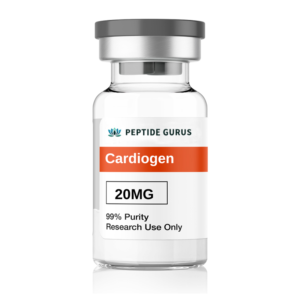In the realm of cardiovascular research and potential therapeutic applications, understanding the proper administration methods of
Cardiogen peptide is crucial. This article titled “Cardiogen peptide administration methods explained” will delve into this topic, integrating details from [your product page link] and adhering to the latest FDA guidelines.
The effectiveness and safety of Cardiogen peptide largely depend on how it is administered. Incorrect administration can lead to suboptimal results, such as reduced efficacy in improving heart function or an increased risk of side effects. For instance, improper injection techniques may cause local irritation, pain, or even affect the absorption rate of the peptide into the bloodstream.
Subcutaneous injection is a common method for administering Cardiogen peptide. As described on our product page, this involves injecting the peptide into the fatty tissue just below the skin. The advantage of subcutaneous injection is that it allows for relatively slow and sustained absorption, which can be beneficial for maintaining a stable level of the peptide in the body. When using this method, it’s essential to follow proper injection procedures. First, clean the injection site with an alcohol swab to reduce the risk of infection. Then, use a sterile syringe and needle appropriate for subcutaneous injection. The injection angle is typically 45 – 90 degrees, depending on the patient’s body mass. After injection, apply gentle pressure to the site without rubbing to prevent bruising.
Intravenous (IV) injection is another option for administering Cardiogen peptide. This method involves directly injecting the peptide into a vein, allowing for rapid delivery into the bloodstream. IV injection is often used in clinical settings where a quick onset of action is required, such as in some acute cardiovascular research studies. However, it requires more skill and precision. Strict aseptic techniques must be followed to prevent infections. Additionally, the concentration and rate of injection need to be carefully controlled to avoid adverse reactions, such as sudden changes in blood pressure or arrhythmias.
The FDA has specific guidelines regarding the administration of peptides like Cardiogen. For research involving human subjects, detailed protocols must be submitted for approval. These protocols should include information about the administration method, dosage, frequency, and monitoring procedures. In the case of subcutaneous and intravenous injections, the FDA requires the use of sterile equipment and proper training for the individuals performing the injections.
When it comes to product labeling, it must clearly state the recommended administration methods, any precautions associated with them, and the potential risks. Our product complies with these FDA regulations, providing clear instructions on how to administer Cardiogen peptide safely and effectively.
Our Cardiogen peptide product is formulated to be suitable for various administration methods. It comes with detailed instructions on dilution and preparation, depending on whether it’s for subcutaneous or intravenous use. The product’s stability during the administration process is also carefully considered. For example, it should be stored and handled according to the recommended conditions to maintain its integrity until the time of injection.
Answer: It’s not advisable to change the administration method without proper justification and approval. Different administration methods have different pharmacokinetic profiles, and changing the method may affect the results of your research. If you need to change, consult with an experienced researcher or follow the appropriate regulatory procedures.
Answer: If you inject too quickly, especially in the case of intravenous injection, monitor for any immediate adverse reactions such as changes in heart rate, blood pressure, or shortness of breath. Report the incident immediately to your supervisor or a medical professional. They can provide guidance on further monitoring or necessary interventions.
Answer: Elderly patients may have thinner skin and less subcutaneous fat, which can affect subcutaneous injection. The injection angle and needle length may need to be adjusted. Also, their overall health status and potential comorbidities should be considered. It’s important to consult a healthcare provider experienced in treating elderly patients for personalized advice.
